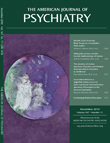Abnormally Reduced Dorsomedial Prefrontal Cortical Activity and Effective Connectivity With Amygdala in Response to Negative Emotional Faces in Postpartum Depression
Abstract
Objective:
Postpartum major depression is a significant public health problem that strikes 15% of new mothers and confers adverse consequences for mothers, children, and families. The neural mechanisms involved in postpartum depression remain unknown, but brain processing of affective stimuli appears to be involved in other affective disorders. The authors examined activity in response to negative emotional faces in the dorsomedial pre-frontal cortex and amygdala, key emotion regulatory neural regions of importance to both mothering and depression.
Method:
Postpartum healthy mothers (N=16) and unmedicated depressed mothers (N=14) underwent functional magnetic resonance imaging blood-oxygen-level-dependent acquisition during a block-designed face versus shape matching task. A two-way analysis of variance was performed examining main effects of condition and group and group-by-condition interaction on activity in bilateral dorsomedial prefrontal cortical and amygdala regions of interest.
Results:
Depressed mothers relative to healthy mothers had significantly reduced left dorsomedial prefrontal cortical face-related activity. In depressed mothers, there was also a significant negative correlation between left amygdala activity and postpartum depression severity and a significant positive correlation between right amygdala activity and absence of infant-related hostility. There was reliable top-down connectivity from the left dorsomedial prefrontal cortex to the left amygdala in healthy, but not depressed, mothers.
Conclusions:
Significantly diminished dorsomedial prefrontal cortex activity and dorsomedial prefrontal cortical-amygdala effective connectivity in response to negative emotional faces may represent an important neural mechanism, or effect, of postpartum depression. Reduced amygdala activity in response to negative emotional faces is associated with greater postpartum depression severity and more impaired maternal attachment processes in postpartum depressed mothers.



